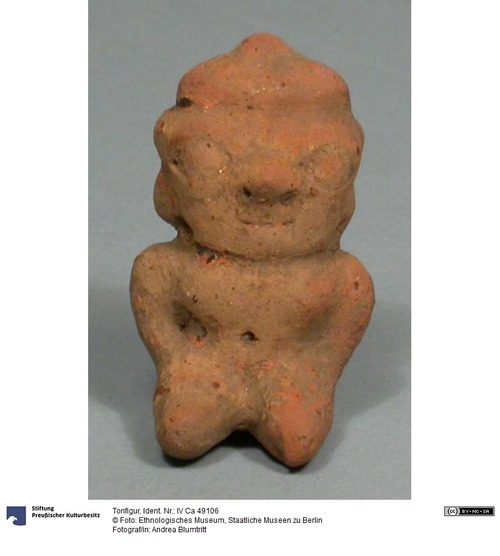Kleine, sitzende, anthropomorphe Skulptur. Die hohle, weibliche (?) Figur besitzt kurze, gedrungene Beine. Sie hat einen übergroßen Kopf und zwei massive Arme, mit denen sie sich auf ihre Oberschenkel stützt. Am Hals befinden sich zwei kleine, gegenständige Öffnungen, die wahrscheinlich zur Aufhängung dienten. Die Keramik ist geglättet, geschlämmt, grundiert und bemalt. Grundierung und Bemalung sind fast vollständig erodiert.
Die Keramik besaß eine rote Bemalung. Ohren, Augen, Nase und Nabel der Skulptur wurden besonders hervorgehoben. Ihre Brüste sind dagegen kaum markiert. Die Figur besitzt einen abgeflachten Hinterkopf, der möglicherweise eine Schädeldeformation anzeigt. Sie trägt eine konische Kopfbedeckung. Symbolische Bedeutung: Ferrero (1975) und Healy (1980) weisen auf sitzende und stehende anthropomorphe Figuren hin, die einen offenen oder geschlossenen Kopfschmuck tragen können. Stevenson-Day (1997) interpretiert die weiblichen Skulpturen der Gruppen Papagayo Policromo (1350-800d.C.), Mora Policromo (1200-800d.C.), Galo Policromo (800-500d.C.) und Rosales Esgrafiado (500d.C.-500a.C.) als Schamanen. Nach Lothrop 1926: Nicoya polychrome ware figurines.
en

